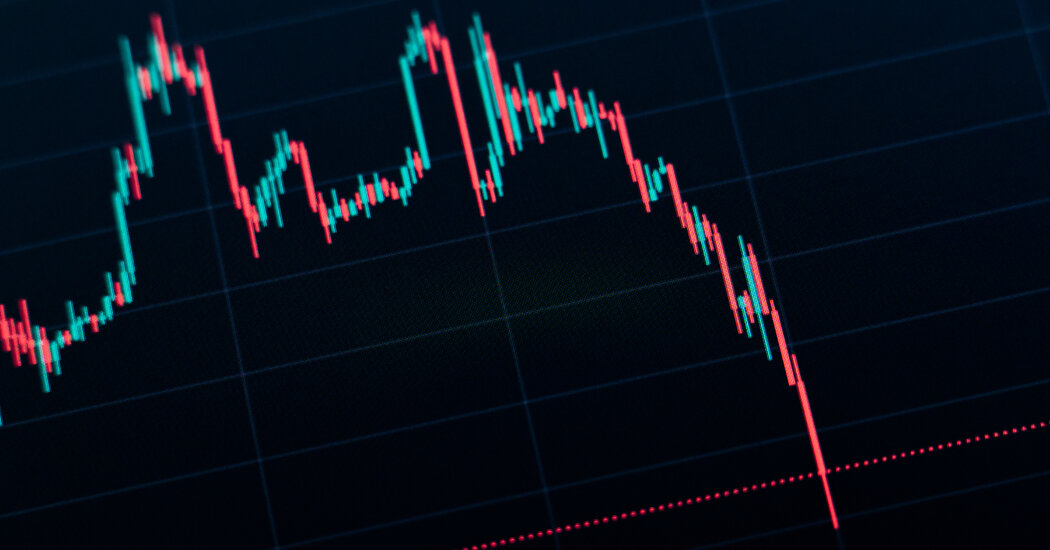Advertisement
Supported by
Paul Krugman
Send any friend a story
As a subscriber, you have 10 gift articles to give each month. Anyone can read what you share.
Opinion Columnist
When the Federal Reserve speaks, it speaks in Fedspeak. A pithy turn of phrase or a striking metaphor can all too easily turn into a headline, causing big market moves and a public backlash. So dry technical language and euphemisms are usually the way to go.
Given this reality, the bluntness of a recent speech on crypto regulation by Lael Brainard, the Fed vice chair, is almost shocking.
True, Brainard didn’t go as far as Jim Chanos, the famous short-seller, who called crypto a “predatory junkyard.” But she came close. The very first heading in her remarks was, “Distinguishing Responsible Innovation From Regulatory Evasion,” and she strongly suggested that much of the crypto universe is driven by the latter. Traditional banking is regulated for a reason; crypto, in bypassing these regulations, she said, has created an environment subject to bank runs, not to mention “theft, hacks and ransom attacks” — plus “money laundering and financing of terrorism.”
Other than that, it’s all good.
The thing is, most of Brainard’s litany has been obvious for some time to independent observers. So why are we only now hearing serious calls for regulation?
Cryptocurrencies have been around since 2009, and in all this time they have never come to play a major role in real-world transactions — El Salvador’s much-hyped attempt to make bitcoin its national currency has become a debacle.
So how did cryptocurrencies come to be worth almost $3 trillion at their peak? (Two-thirds of that value has now vanished.) Why was nothing done to rein in “stablecoins,” which were supposedly pegged to the U.S. dollar but were clearly subject to all the risks of unregulated banking, and are now experiencing a cascading series of collapses reminiscent of the wave of bank failures that helped make the Great Depression great?
My answer is that while the crypto industry has never managed to come up with products that are much use in the real economy, it has been spectacularly successful at marketing itself, creating an image of being both cutting edge and respectable. It has done so, in particular, by cultivating prominent people and institutions.
I’m not talking here about the embrace of crypto by libertarians and MAGA types, nor am I talking about embarrassing episodes like that crypto ad starring Matt Damon. What strikes me, instead, is the extent to which crypto has gained a reputation for respectability through association with high-status institutions and individuals.
Suppose, for example, that you use a digital payments app like Venmo, which has amply demonstrated its usefulness for real-world transactions (you can even use it to buy produce at sidewalk fruit stands). Well, if you go to Venmo’s home page, you encounter an invitation to use the app to “begin your crypto journey”; in the app itself, a “Crypto” tab appears right after “Home” and “Cards.” Surely, then, crypto must be serious business.
Suppose you want to learn about crypto. Many famous universities offer programs, typically online subscription courses.
Suppose you want to know who’s advising major players in the crypto industry. Well, the board of Digital Currency Group, one of the biggest players, includes a co-chair of the Brookings Institution’s board of trustees and boasts a former Treasury secretary as an adviser.
Given this aura of mainstream approval, how many people would have been willing to believe that the digital emperor had no clothes? More to the point, how many would have been willing to accept a regulatory crackdown?
Why were these mainstream institutions and people lending cover to what is, as Brainard made clear, a highly dubious industry? I doubt there was any corruption (as opposed to what goes on in the crypto sector itself, which is overrun with fraudsters). Indeed, I know from personal experience that one can draw a paycheck doing what seems like honest work and find out only later that the people signing the check were scammers.
Still, there clearly were and are financial rewards involved. I don’t know how much money Venmo makes from people buying and selling crypto on its platform, but it’s certainly not offering the service out of sheer good will. If you want to take, say, M.I.T.’s online blockchain course, it will cost you $3,500.
The way I see it, crypto evolved into a sort of postmodern pyramid scheme. The industry lured investors in with a combination of technobabble and libertarian derp; it used some of that cash flow to buy the illusion of respectability, which brought in even more investors. And for a while, even as the risks multiplied, it became, in effect, too big to regulate.
One way to read Brainard’s speech is that she was saying that the crypto crash offers an opportunity — a moment in which effective regulation has become politically possible. And she urges us to take advantage of this moment, before crypto stops being a mere casino and becomes a threat to financial stability.
That’s very good advice. I hope the Fed and other policymakers take it.
The Times is committed to publishing a diversity of letters to the editor. We’d like to hear what you think about this or any of our articles. Here are some tips. And here’s our email: [email protected].
Follow The New York Times Opinion section on Facebook, Twitter (@NYTopinion) and Instagram.
Advertisement
Author
Administraroot


